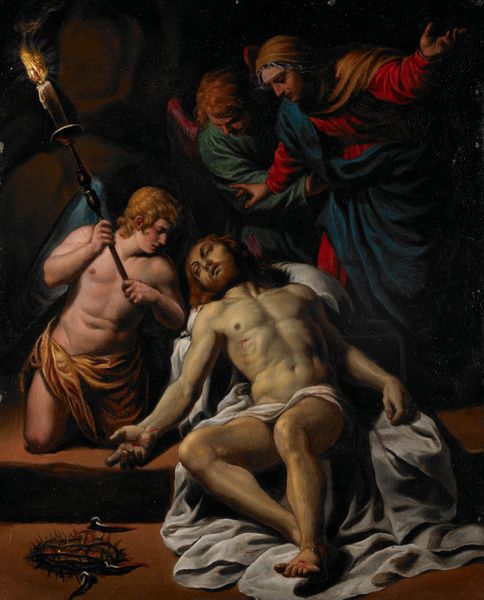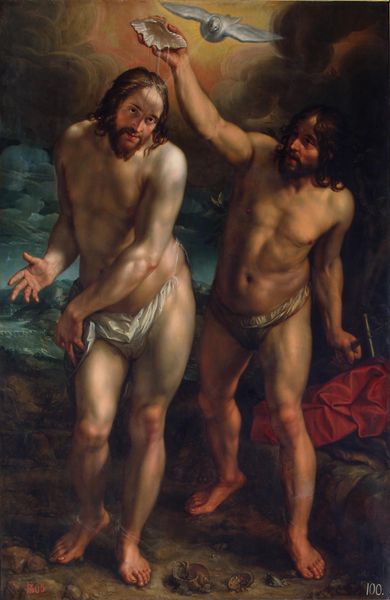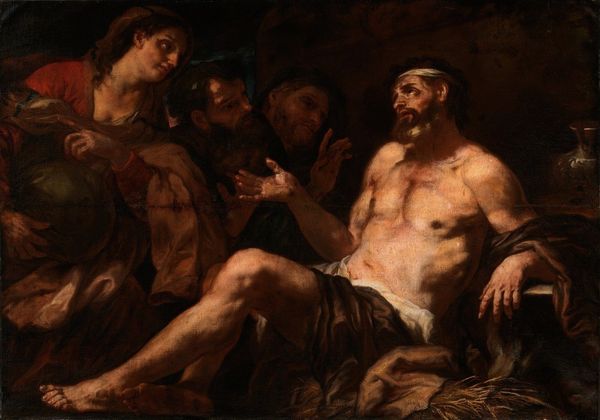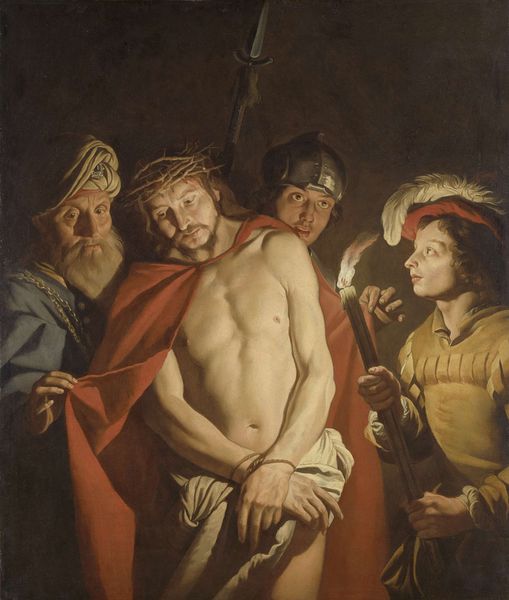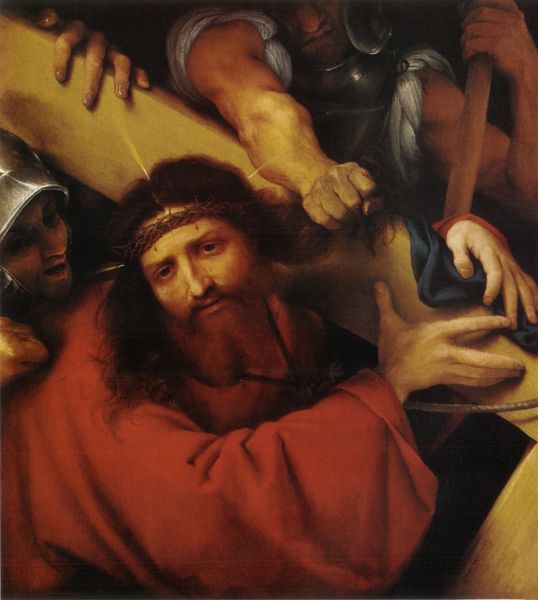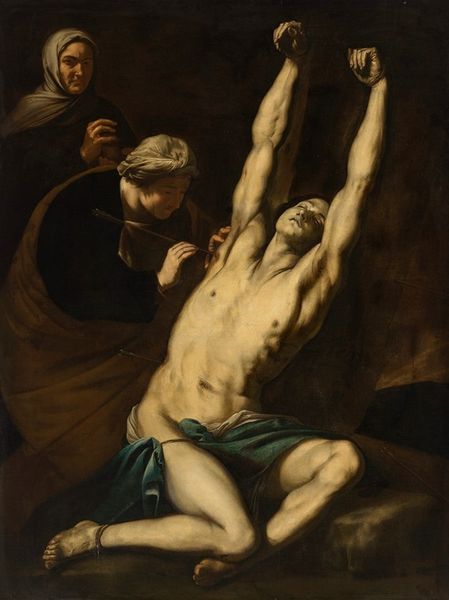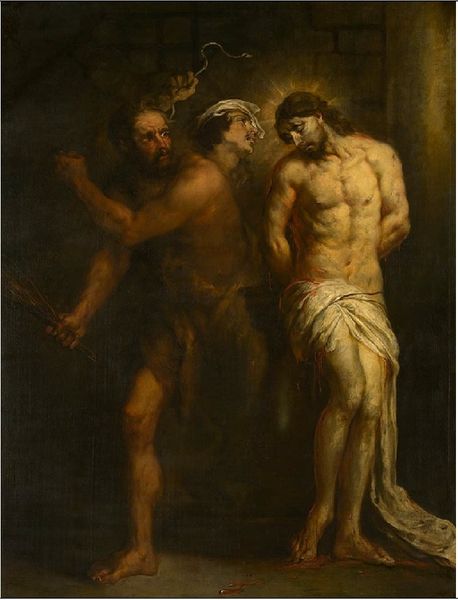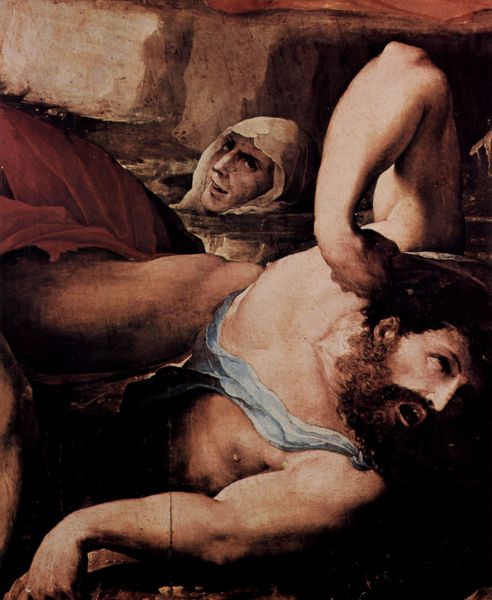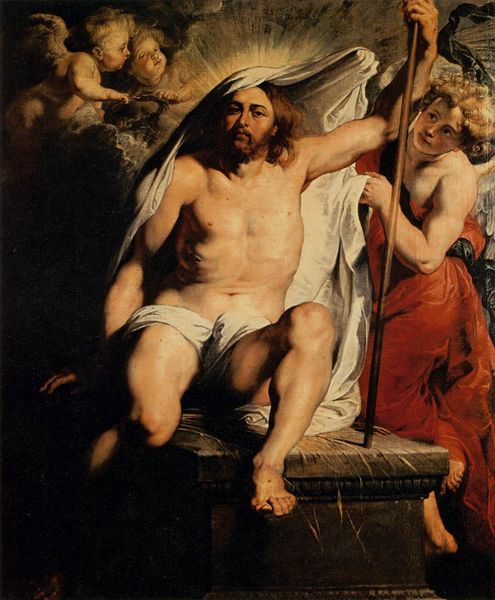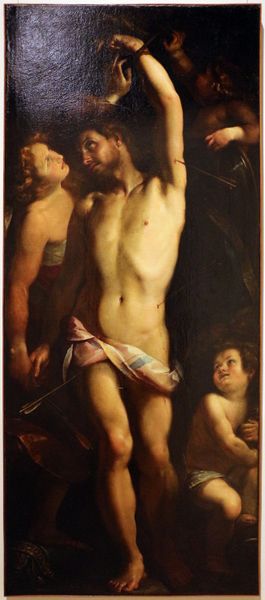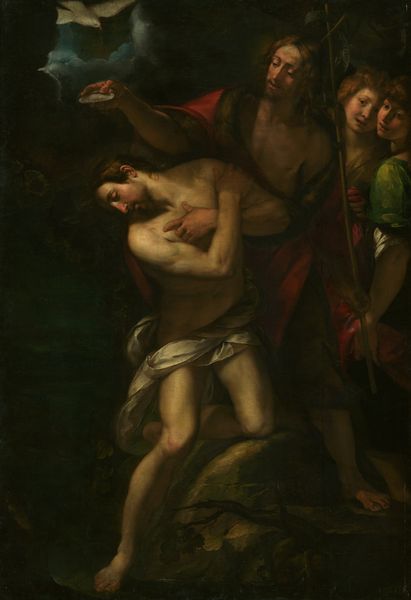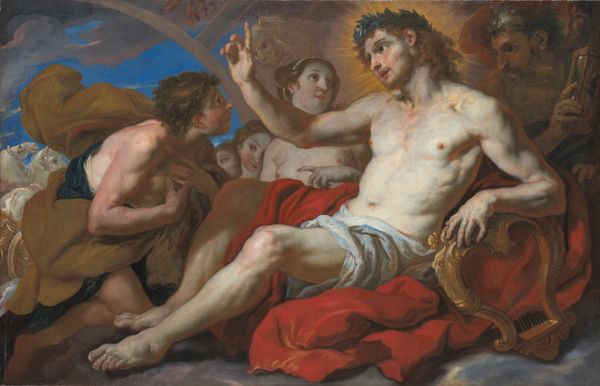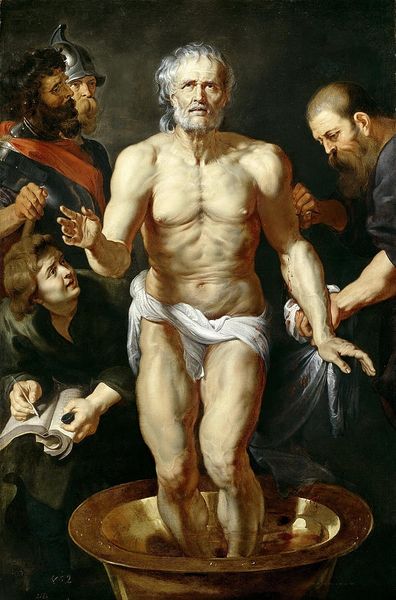
painting, oil-paint
#
portrait
#
baroque
#
painting
#
oil-paint
#
figuration
#
chiaroscuro
#
history-painting
#
italian-renaissance
#
nude
Copyright: Public domain
Curator: Ah, yes, Honthorst's "Christ at the Column" from around 1645. An oil painting. It has such a haunting quality. What's your take? Editor: The shadows swallow everything but the central figure, who, despite his obvious distress, looks almost…luminous? The scene's contained violence is striking; the contrast of textures from skin to metal is disturbing. Curator: Distressing for sure. It feels so raw, so personal, don’t you think? Like a spotlight on suffering, that is both intense and somehow…isolated. Honthorst, you know, really nailed the drama here, the almost theatrical presentation. Editor: Precisely, it's carefully crafted theatre. The power dynamics at play are stark. Christ, bound and vulnerable, juxtaposed with the gazes of the surrounding figures. It provokes so many questions. Who are these people? What systems of power do they represent, what is their relation to the man in chains? Curator: Honthorst, borrowing heavily from Caravaggio, makes it difficult for me to engage in rational though when viewing the dramatic scene. Instead, my feelings about my connection to humanity arise—as if one of my friends was suffering this horrific event. Maybe that's how they felt. Maybe I should stop trying to 'appreciate' it from afar. The theatrical style, like you said, really leans into this deep sadness in my case, not necessarily that I like feeling sad. It’s more like, understanding a piece of myself. Editor: And isn't that what religious art has often been leveraged to achieve? This kind of intense emotion meant to move one closer to divinity. Considering this was created during the Counter-Reformation, this piece aligns with the call for an art of heightened drama and heightened realism to counteract Protestant austerity. Curator: Yes, very true. It feels designed to provoke an immediate emotional reaction, not just a reasoned acceptance of religious dogma. Editor: But the problem with manufactured emotional responses is how easily they can become manipulative and how the aesthetics of this torture porn renders these horrors consumable to wealthy patrons. Curator: That makes sense. Maybe the painting becomes not just an invitation for personal reflection, but also a challenge to consider the broader cultural and political uses of suffering? Thank you. Editor: Art always benefits when discussing power and purpose with the intent of improving our understanding of its effect on communities, groups, and individuals.
Comments
No comments
Be the first to comment and join the conversation on the ultimate creative platform.
